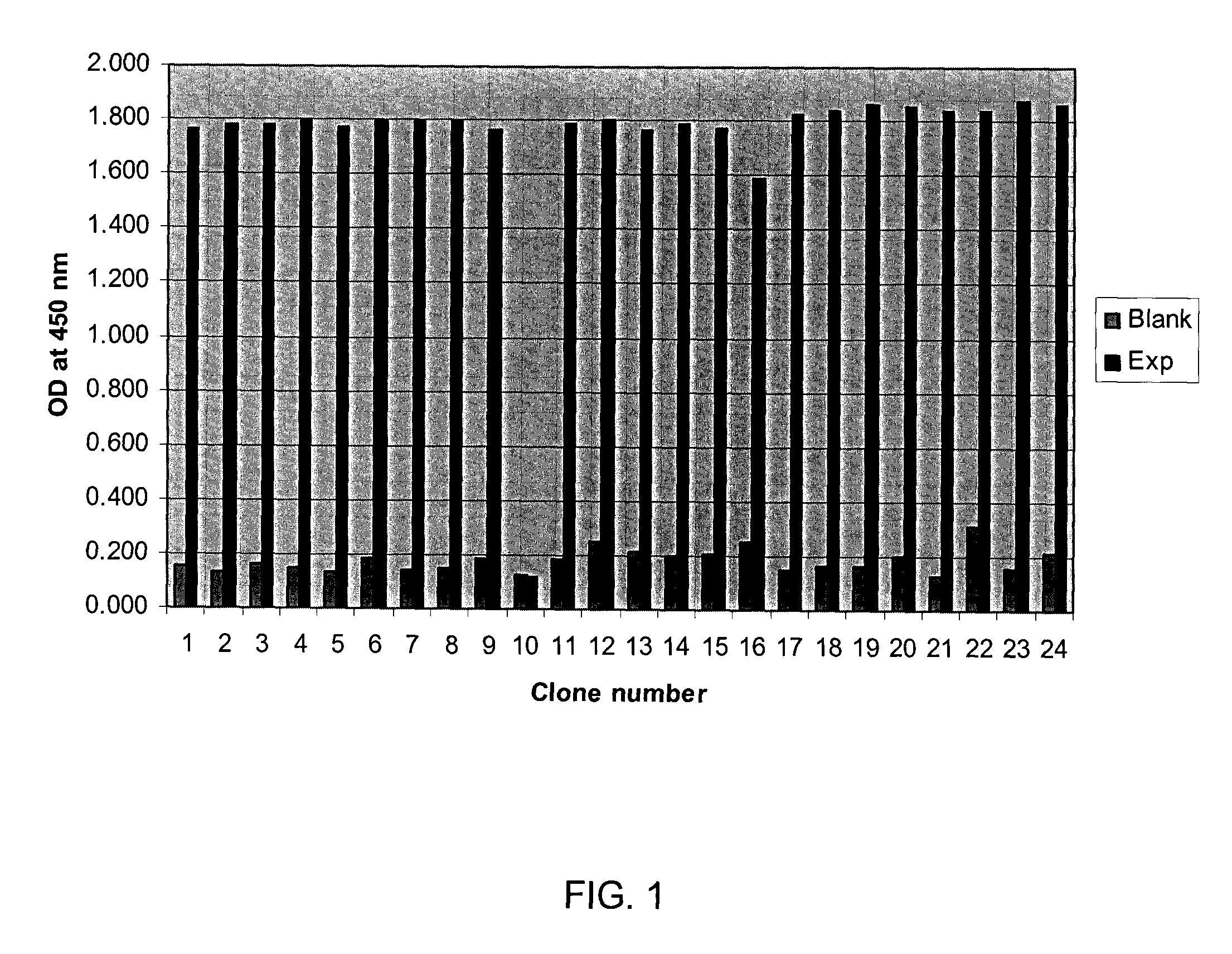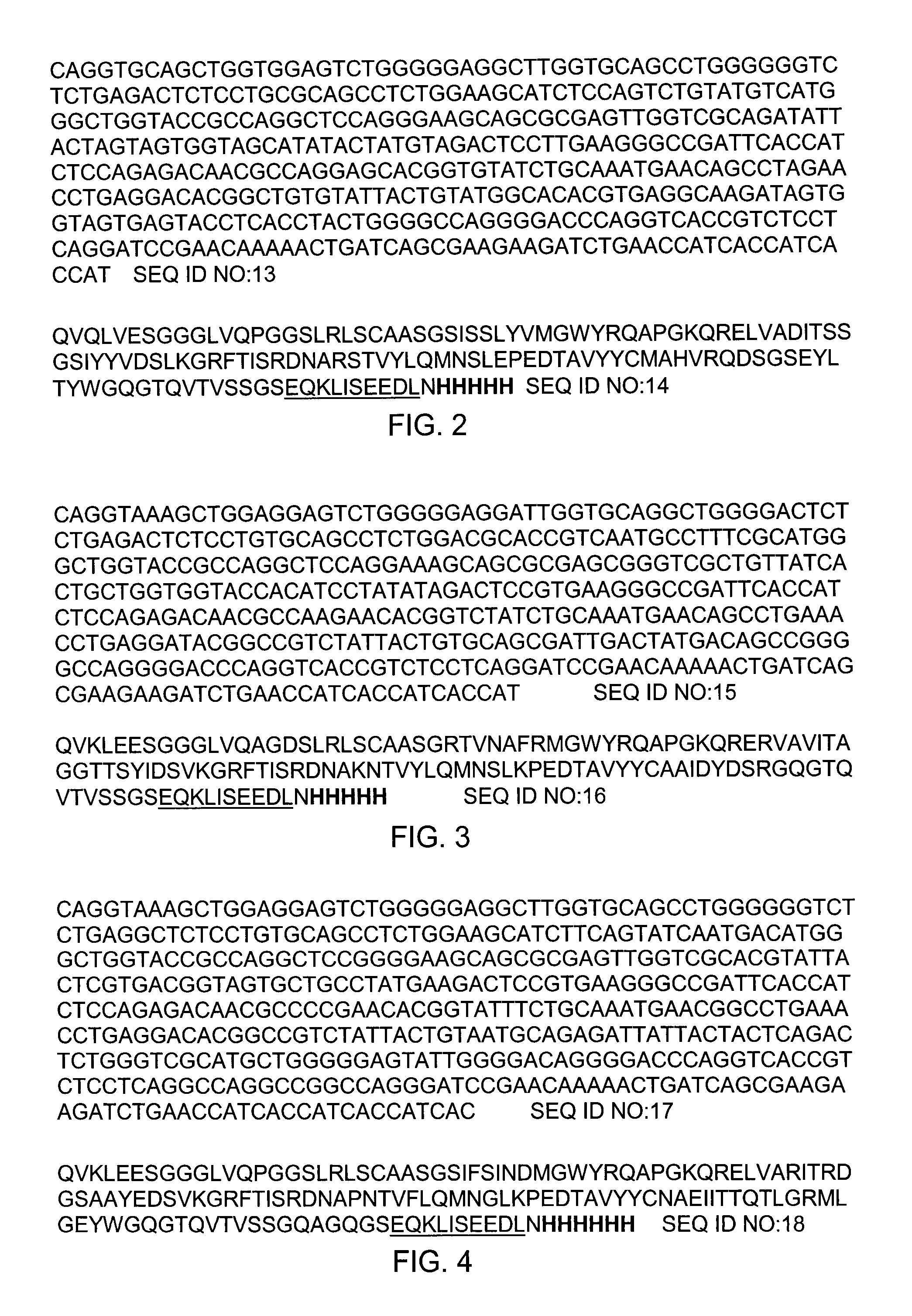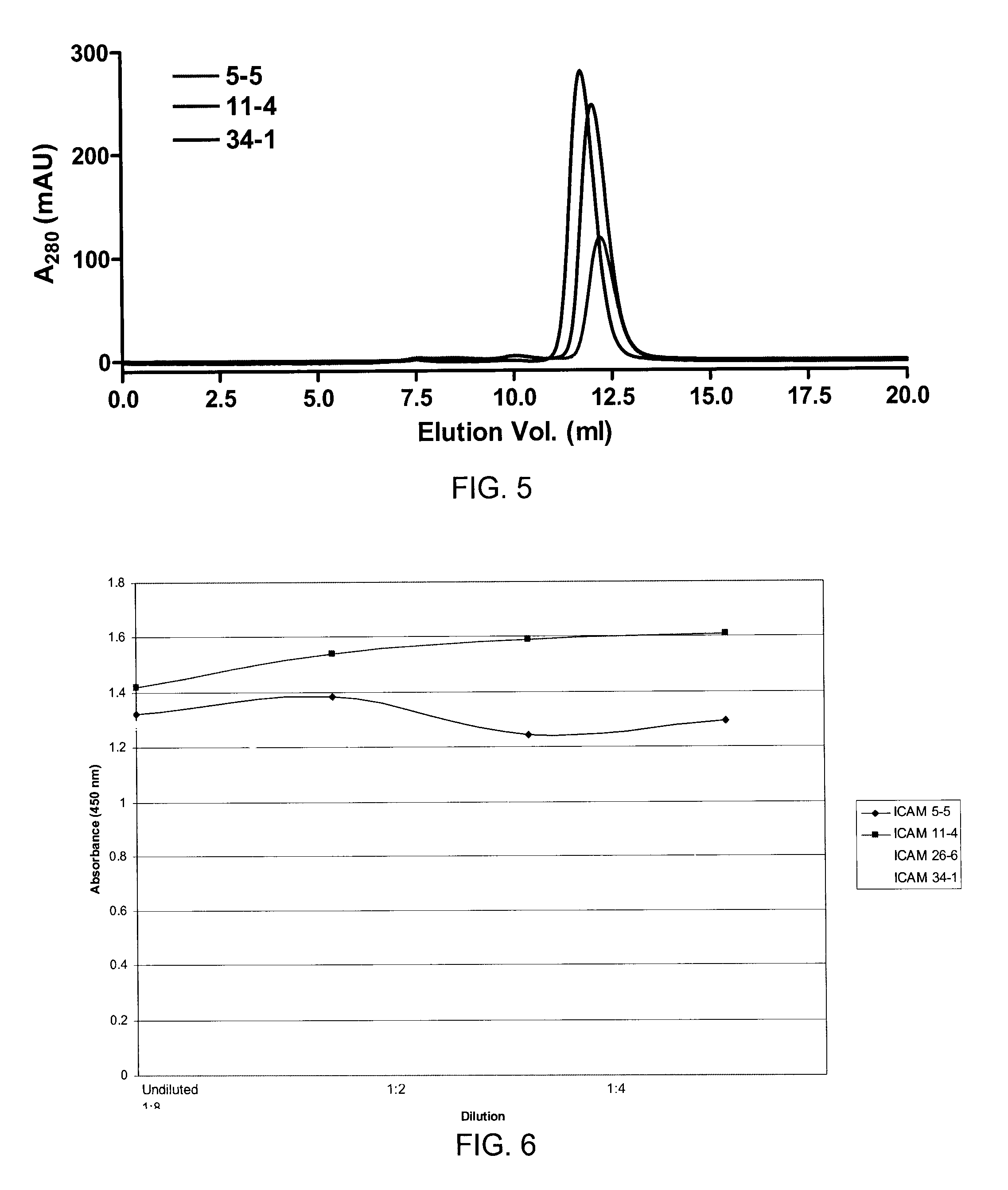Anti-ICAM-1 single domain antibody and uses thereof
a single-domain antibody and antibody technology, applied in the field of antiicam-1 single-domain antibodies, can solve the problems of increasing the financial burden on health care, the condition is left undiscovered, and the cost of screening (mri or x-ray angiography), and achieves the effect of reducing antibody expression levels over time, fast contrast-to-noise ratio, and easy production and cheapness
- Summary
- Abstract
- Description
- Claims
- Application Information
AI Technical Summary
Benefits of technology
Problems solved by technology
Method used
Image
Examples
example 1
Immunization and PCR Amplification
[0125]Single-domain antibodies (sdAb) were generated by immunization of a llama with ICAM-1. Lymphocytes were collected and DNA corresponding to sdAb was purified.
[0126]A llama was immunized with recombinant antigen. For each injection, 100 μg of recombinant human ICAM-1 (R&D systems, reconstituted with sterile water according to manufacturer's recommendation to prepare a stock solution of 1 mg / ml), in a total volume of 0.5 ml was mixed with an equal volume of incomplete Freund's adjuvant and 0.5 ml was injected, subcutaneously. Seven injections were performed at approximately two week intervals and blood was collected at each injection.
[0127]Total RNA was isolated from approximately 1×107 lymphocytes collected from day 70 of the immunization protocol with a QIAamp RNA blood mini kit (QIAGEN Sciences, Mississauga, ON) and according to the kit instructions. About 5 μg of total RNA was used as template for first strand cDNA synthesis with an oligo dT ...
example 2
Phage Library Construction and Panning
[0129]A phage library containing the DNA isolated in Example 1 was constructed then panned to identify anti-ICAM-1 antibodies. Reactivity of the antibodies was tested using ELISA.
[0130]30 μg of pMED1 (Arbabi-Ghahroudi et al., 2009) DNA was digested with SfiI overnight at 50° C. To minimize self-ligation, digestion was continued for additional 2 hours at 37° C. by adding 20 units of both XhoI and PstI restriction enzymes. For library construction, 10 μg of phagemid DNA was ligated with 1.75 μg of VHH fragment DNA (isolated in Example 1) and incubated for 2 hours at RT using the LigaFast DNA ligation system (Promega, Corp., Madison, Wis.), according to the recommended protocol. The ligated product was precipitated with n-butanol, resuspended in sterile water and electroporated into competent E. coli TG1 cells (Stratagene, Cedar Creek, Tex.). Transformed bacterial cells were diluted in SOC medium and incubated for 1 hour at 37° C. with slow shaking...
example 3
Expression of Soluble sdAb
[0134]VHH antibodies isolated via phage panning in Example 2 and showing reactivity to ICAM-1 were expressed and their reactivity confirmed via ELISA.
[0135]DNA corresponding to the VHH antibodies identified in Example 2 was inserted into an expression vector. Restriction enzyme sites BbsI and BamHI were added to the 5′ and 3′ ends of the positive VHH DNA fragments via a PCR using gene-specific sense primer VHH BbsI (5′-TATGAAGACACCAGGCCCAGGTGCAGCTGGTGGAGTCT-3′; SEQ ID NO:24) and anti-sense primer VHH-BamHI (5′-CGCGGGATCCTGAGGAGACGGTGACCTGGGT-3′; SEQ ID NO:25). The amplified DNA was then digested with BbsI and BamHI restriction enzymes and ligated into digested pSJF2 vector using standard techniques (Tanha et al., 2003). Competent E. coli TG1 cells were transformed with the vectors and clones expressing anti-ICAM-1-specific recombinant VHH were grown in 1-liter cultures of 2×YT medium+ampicillin (100 mg·mL−1) with 0.1% glucose to an OD600 of 0.8. Cultures we...
PUM
| Property | Measurement | Unit |
|---|---|---|
| fluorescence life time | aaaaa | aaaaa |
| total volume | aaaaa | aaaaa |
| volume | aaaaa | aaaaa |
Abstract
Description
Claims
Application Information
 Login to View More
Login to View More - R&D
- Intellectual Property
- Life Sciences
- Materials
- Tech Scout
- Unparalleled Data Quality
- Higher Quality Content
- 60% Fewer Hallucinations
Browse by: Latest US Patents, China's latest patents, Technical Efficacy Thesaurus, Application Domain, Technology Topic, Popular Technical Reports.
© 2025 PatSnap. All rights reserved.Legal|Privacy policy|Modern Slavery Act Transparency Statement|Sitemap|About US| Contact US: help@patsnap.com



